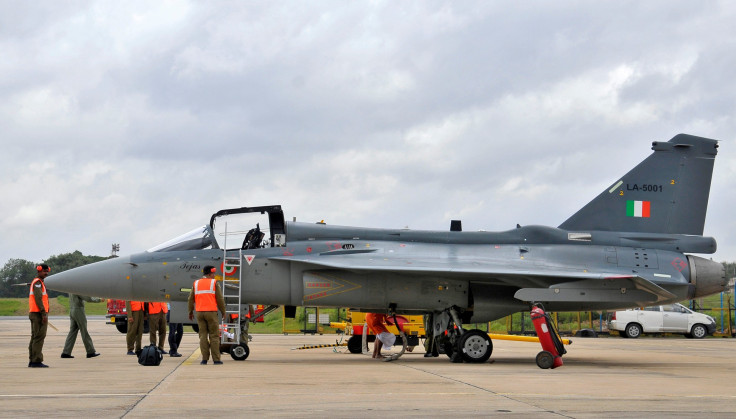India Inducts Its First Indigenous Combat Plane ‘Tejas,’ 33 Years After It Was Cleared For Development

More than three decades after it was cleared for development, the “Tejas” Light Combat Aircraft — India’s first indigenously built fighter jet, was inducted into the air force. The aircraft, developed by the state-run Hindustan Aeronautics Limited (HAL), will eventually replace the country’s aging squadron of the Russian-made MiG-21s — planes that have, for the past 50 years been the backbone of the air force’s fleet but have been plagued with a patchy safety record.
“Induction of indigenously made Tejas fighter jet into the Air Force fills our hearts with unparalleled pride and happiness,” India’s Prime Minister Narendra Modi said in a statement. “I laud HAL and ADA [Aeronautical Development Agency] on the induction of Tejas fighter jet. This illustrates our skills and strengths to enhance indigenous defence manufacturing.”
Moment of National pride. Indigenously developed Tejas fighter jet inducted into Air Force. Tejas will take our air strength to new heights.
— Manohar Parrikar (@manoharparrikar) July 1, 2016
The single-seat fighter jet did not report a single accident in its 3,000 hours of flying. Tejas, which is designed to carry air-to-air and air-to-surface missiles, is equipped with a state-of-the-art Israeli radar and an Indian-made radar warning system, which alerts the pilot to enemy aircraft or missiles.
“Easily the best aircraft I have flown. It's comparable and on a par with any fourth generation fighter jet in world today,” Madhav Rangachari, an Indian air force pilot, reportedly said.
Currently, India’s air force squadrons are a mix of Russian, French and British planes. Decreasing India’s reliance on imported weapons and defense hardware is one of the key planks of Modi’s “Make in India” initiative, which seeks to boost domestic manufacturing. The country is currently the world’s largest importer of weapons, accounting for 14 percent of total imports between 2011 and 2015, according to an estimate by the Stockholm International Peace Research Institute.
Tejas’ development is also believed to have been spurred by India’s longstanding conflict with China, which recently announced that its J-20 stealth bombers would enter service “in the near future.”
© Copyright IBTimes 2024. All rights reserved.






















